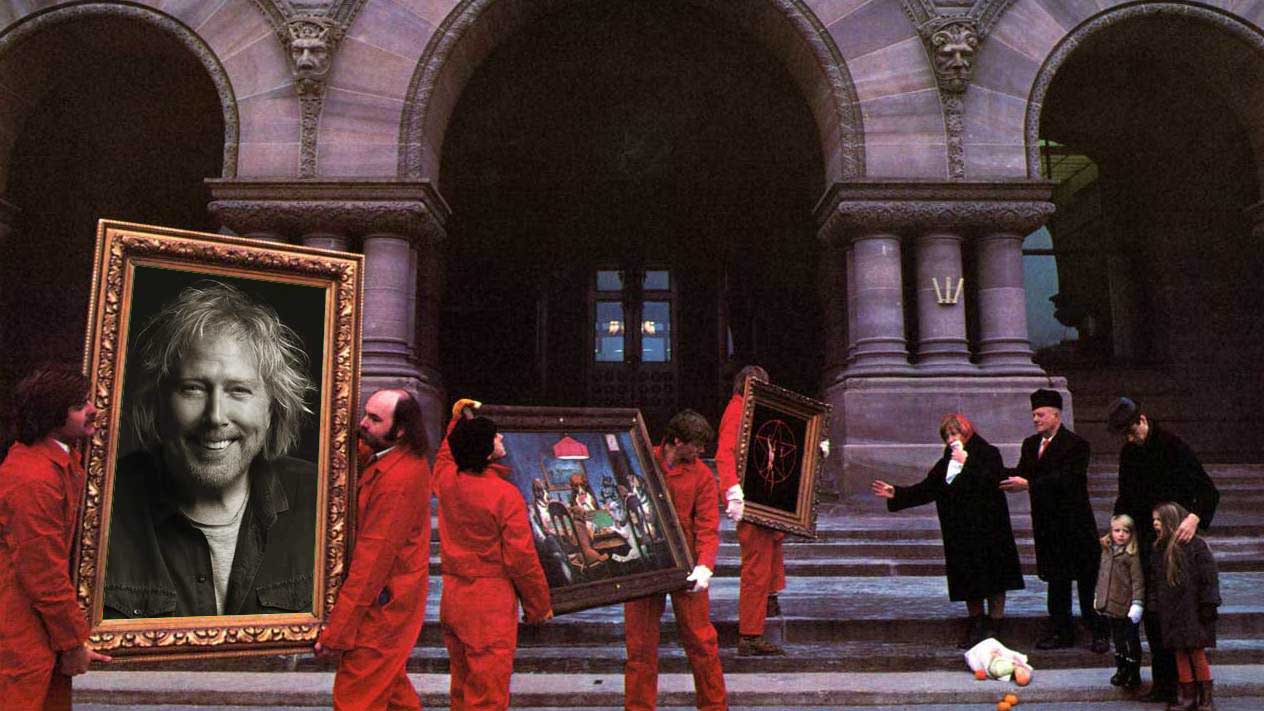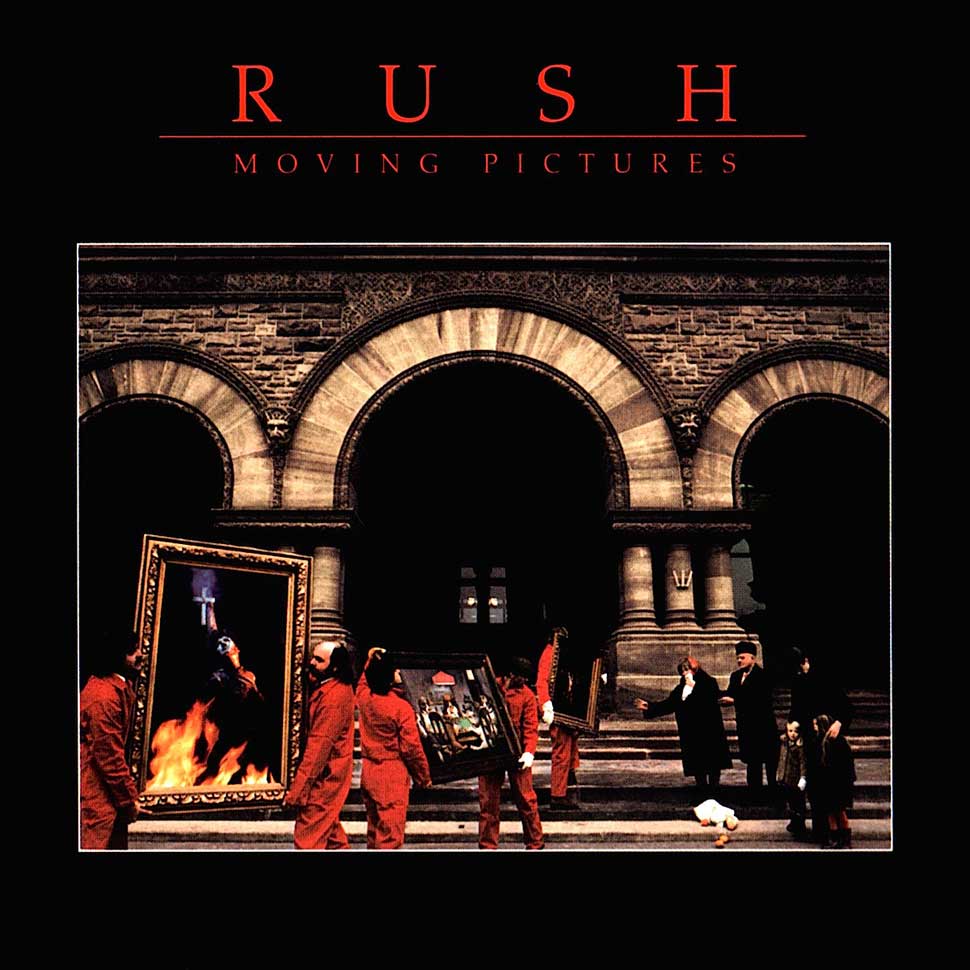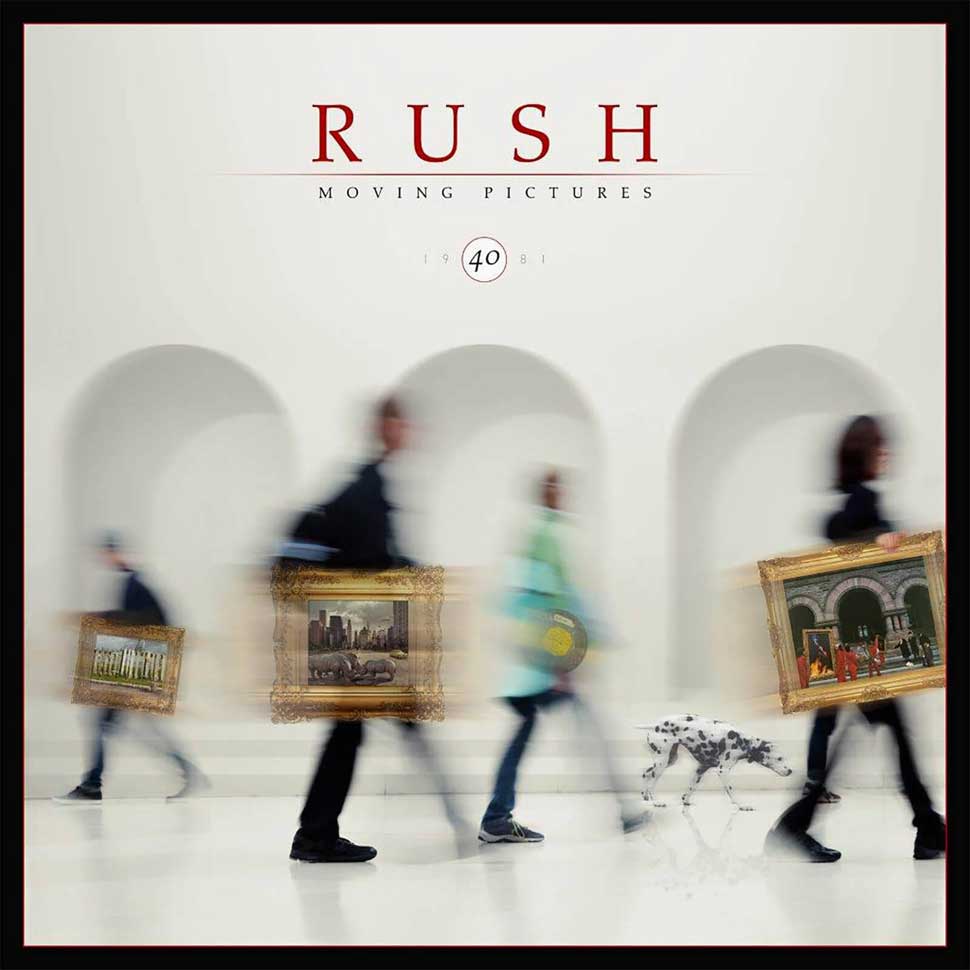Rush's Moving Pictures: a tale of double-entendres and red overalls
Graphic artist Hugh Syme looks back on the creation of the iconic cover art for Rush's classic album Moving Pictures

From 2112’s infamous ‘starman’, through floating brain hemispheres and a kid casually kicking a skull, Hugh Syme has always been on hand to bring Rush’s musical fever dreams to life.
Working for years in close conjunction with late drummer and lyricist Neil Peart, Syme’s work became synonymous with the Canadian trio, latterly putting a new, reimagined spin on some of their classic albums, including 1980's classic Moving Pictures.
“I like the triple play on the sleeve with the words moving pictures,” frontman Geddy Lee told Classic Rock in 2010. “You’ve got the pictures literally being moved out of the building, then the old couple who were moved to tears because they’d dropped their shopping bag, and finally the film crew on the back cover, making a moving picture. Again, it’s all to do with our sense of humour.
"We were very aware that it was really time to get away from the fantasy and science fiction elements that had always been part of what we were about. But as that musical side of things changed, so did our feelings of the way our album artwork should look.”
Below, Hugh Syme looks back at the creation of the iconic Moving Pictures artwork.

When did you first hear that the title was going to be Moving Pictures?
I remember exactly where I was: sitting in my friend Gail’s home in St Catharines, Ontario, when Neil called me with the album’s title. I also recall my immediate resolve on the cover’s direction.
Sign up below to get the latest from Classic Rock, plus exclusive special offers, direct to your inbox!
Which was?
Men in red coveralls actually moving pictures. The additional layers and triple entendres would follow.
Did you spend much time at Le Studio as the band were working on the album?
Deborah Samuel and I went up to shoot photos of the band for the album. We stayed for about three days in the studio’s guest house. We also sat for two hours in a paddle boat while Deborah shot Neil playing his red Tama kit on a raft in the middle of a nearby lake for a Tama ad.
A private, and tireless, drum solo echoing off the surrounding Laurentian Mountains. That was a good day! Though the highlight on that trip to Morin-Heights was being asked by the band to play PPG synth on Witch Hunt.
You finally settled on two concepts for the record: literally moving pictures, and making movies. Was there ever a doubt which one would be the actual cover?
No, that order made sense to me. The three movers actively moving pictures on the front, then [on the back] they’re taking a break, as we reveal a film set in an overview for context.

Who came up with the idea of using the government building as the backdrop?
I did. A happy and timely accident. I remember driving north on University Avenue in Toronto and was struck by the legislative building at Queen’s Park, whose architecture featured three distinct arches, each supported by three pillars, and the three arched windows on the overhead mezzanine.
You must remember that the concept of ‘three’ was emerging as a recurring motif for the band at the time and I thought: “Well it won’t hurt to ask.” And to my delight there was no hesitation, permit or fee required. Simply that we shoot on a Sunday when parliament wasn’t in session.
You re-imagined the cover and created new illustrations for some songs for the reissue. How was that?
For all the fortieth-anniversary box sets, happily. It’s been a real delight every time, and a challenge to me personally to re-familiarise myself with Neil’s lyrics, and to reflect the themes of each song with today’s skill sets and mind-set. It was a joy and privilege then, as it continues to be all these years later.
Is that really Neil in the middle of the photo on the back cover, or is that just a myth?
I love a good mystery, don’t you?

Philip Wilding is a novelist, journalist, scriptwriter, biographer and radio producer. As a young journalist he criss-crossed most of the United States with bands like Motley Crue, Kiss and Poison (think the Almost Famous movie but with more hairspray). More latterly, he’s sat down to chat with bands like the slightly more erudite Manic Street Preachers, Afghan Whigs, Rush and Marillion.

